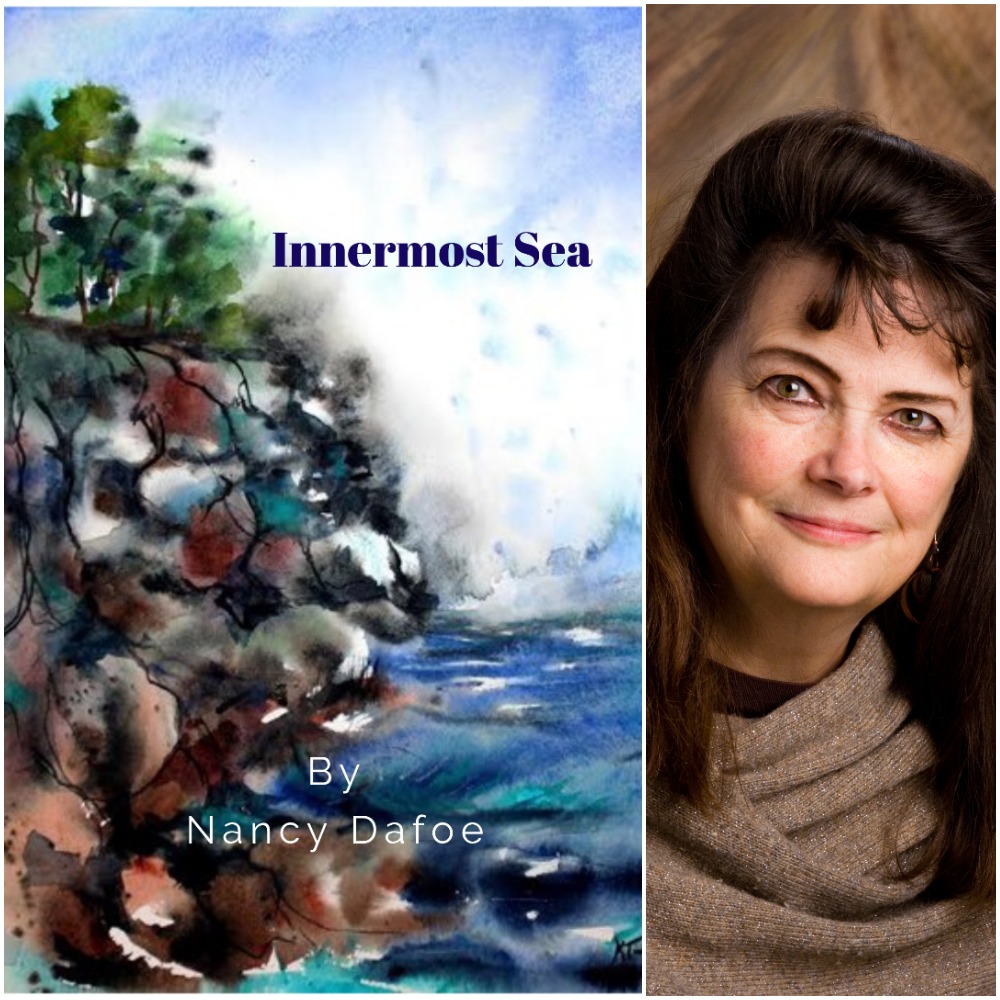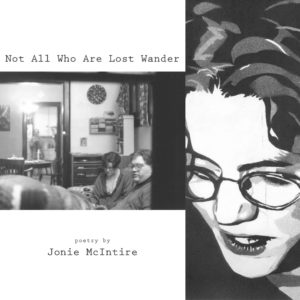Innermost Sea by Nancy Dafoe
$19.99
In Nancy Avery Dafoe’s latest poetry collection, The Innermost Sea, two visions converge; one investigates the world outside us, the other the world within. Dafoe scrutinizes and ruminates, her relentless curiosity steering toward epiphany and naming. Hers is a unifying vision: immensity is recognized in the keenly observed local. Whether it’s a rocky coast or a painful loss, Dafoe’s skillful language, rife with music, tames the overwhelming in poems that lift and sustain us. As well as revealing the amazements of nature, she excels at exploring the domains of painters and their models, and inspires us to rediscover the pleasure of looking hard and long. In her personal narratives, the poet stitches connections to the larger world so adroitly, bells ring inside us.
–Gwynn O’Gara, author of Snake Woman Poems, Fixer-Upper, and Winter at Green Haven
In her latest collection, Nancy Avery Dafoe embarks on a quest to apprehend the outer world’s intriguing dualities (“concrete and abstract,” “possibility and impossibility,” “natural and unnatural”) while at the same time plumbing the mind’s complex “innermost sea.” Guided by memory and buoyed by personal experience, Dafoe’s The Innermost Sea extols twin lifelines: a reader’s enthrallment with literary works and a writer’s wild, storm-tossed act of making art. Stanza by stanza, Dafoe brings readers ever closer to what she is seeking, that “elusive beauty and truth just beyond reach.”
–Jo Pitkin, author of Rendering
Description
Innermost Sea
by Nancy Dafoe
$19.99, Full-length, paper
978-1-63534-799-9
2018
Poet, author, educator Nancy Avery Dafoe lives in Homer, NY. She writes across genres and has published eight books. Her writings have earned local, state, and national awards, including the William Faulkner award in poetry in 2016. Her published books include Poets Diving in the Night; a cross-genre memoir An Iceberg in Paradise: A Passage through Alzheimer’s; texts on education and writing The Misdirection of Education Policy, Breaking Open the Box, and Writing Creatively; and two novels, You Enter a Room and Both End in Speculation.






Phoebe Nilsen –
“Gold All Around”
A Review of Nancy Avery Dafoe’s The Innermost Sea
by Phoebe Nilsen
Reading Nancy Avery Dafoe’s The Innermost Sea is a delight for the mind and the senses, akin to exploring coral reefs alive with colorful tropical fish. There is a wealth of variety in this book, and as she writes of a character in the poem, “Entrance Exam,” “an intensity of color, shapes she inspires.” She keeps us turning pages to see what the next topic, memorable image or turn of phrase will be (“the umbilical flowering vine of memory” or “age running in tributaries/and spreading across his famous face” or “a river kidnaps light/rushing us along,” or yet again, “two chicks spiked bills straight up,/like blackened toothpicks/jabbing air”). Once we join her on this poetic journey, we will want to do it again and again. The depths of this sea, the layers encountered, make one realize that there will always be something new to discover.
This journey/book is divided into five sections, so aptly titled, that also when the titles are put together they read like a short poem:
Traveling inward,
toward perception,
steering with scrutiny
through rumination
to epiphany.
This is the journey the reader is privileged to join. With expert skill, the author leads the reader through these stages, not only through the book as a whole but also in individual poems which culminate in an epiphany, an illumination about life, death, loss, relationships, nature, poets and poetry, art and artists, and memory, to mention a few.
Dafoe also makes unexpected connections in her writing to other poets, Plath, Sexton, T.S. Eliot, Dickinson, Ted Hughes, Dorothy Parker or Wordsworth, and we realize she is comfortable in their company. Indeed, she is one of them. She is as comfortable writing about these authors as she is writing about trees or birds. And her knowledge informs her writing, whether she writes about types of trees (Quaking Aspen, Kapok, Australian Umbrella, Tree of Heaven), birds (tern, crows, Red Tailed Hawk) or artists (Matisse, Van Gogh, Degas, Monet, Picasso); she shares it with the reader in a manner that makes it all seem delightfully and deceptively easy. She opens the door for us, “bestows a window into history,/ looking into our art and artifice,” (from “Archer Bends a Bow”).
In Dafoe’s poem, “Poetry is too damned intimate,” we read about the “poet loitering until/we close our doors or allow him/or her to settle in with us/for a night.” A night would only be the beginning in this case. This is a collection of poems to return to, as we read in “Poem Registering in the Throat,” “that tear and stain, those fingerprints/and smudges are a writer’s lover,/the reader knowing where to turn again/one page earmarked by a folded corner.” There will be many earmarked corners. Here the reader will find the alchemist who is able to turn whatever she touches or whatever touches her to gold, be it a poem, a painting, a student’s words, even death and loss; all is turned to gold that enriches us, her readers. Nothing is lost or wasted, even when it is gone. In “Alchemy at Lac Yser,” we hear a father saying, “There is gold all around,” and though there may be little precious metal left when he is gone, there is “sun all around/turning leaves, sand, and water to gold.” There is gold all around in this book and plenty to go around for all who open the door to this poet.